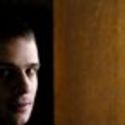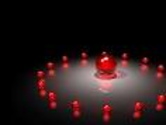-
About
- About Listly
- Community & Support
- Howto
- Chrome Extension
- Bookmarklet
- WordPress Plugin
- Listly Premium
- Privacy
- Terms
- DMCA Copyright
- © 2010-2025 Boomy Labs
 Eugenio Tiengo
Eugenio Tiengo
Listly by Eugenio Tiengo
Reverse image search is one of those handy innovations that's often hard to come up with specific uses for. Sure, you can use it to track down the origin of a photo, but it's also useful for hunting down product names, apartments, and even recipes.
With Google, you can just drop a picture into Google Images - http://images.google.com/ - and it'll search for similar pictures. Other tools, like TinEye - http://www.tineye.com/ - do the same thing.
Source: http://lifehacker.com/clever-uses-for-reverse-image-search-473032092

If you live in a city where a realtor or apartment rental company hides addresses behind a paywall, a reverse image search might be all you need to get around it.

If you're the type to frequent sites like Pinterest or Tumblr, you see all kinds of cool products that often aren't labeled properly. This might include something as simple as a wedding dress or as complex as a shot of someone's apartment with a cool chair.

If you throw that picture into reverse image search, there's a reasonable chance you'll pull up a recipe for it if it was used in a blog post or on one of the millions of different recipe web sites. This doesn't exactly work with just snapping a picture of something at a restaurant, but it's surprisingly effective for figuring out what some random picture of a meal on a news story or blog post is.

If you're trying to figure who a celebrity is, but don't have much information, a reverse image search can quickly pull up the information you need.
Any image you have from any film or even a snapshot of your TV can usually lead you down the path to identify the star in question.

Whatever your social network of choice is, a number of fake profiles exist that try to friend you. Since most of these use stock photos or random pictures of the internet, finding the fakes is easy with a reverse image search.
The process works for any type of social network where people are creating their own profiles—from Facebook to AirBnB, and even dating sites.

One of the more common uses for reverse image search is to track down high resolution original images for things like wallpapers.
It's not just for finding specific wallpapers either. Since reverse image search can often work with nothing but a crop, it's also handy for tracking down backgrounds and wallpapers you find on tech blogs or screenshots.

If you're a creative type who posts photographs or art on Flickr, your own personal blog, or wherever else, you might want to know where else it's popping up on the web. Part of that is making sure people are respecting your attribution requests or copyright, but it's also just about finding any other conversations that might be happening around your art.
Of course, it's not just photographers or artists who have a use for this. Even if you're a DIYer sharing your projects on places like Instructables, using reverse image search is a useful tool to track down where your creations are talked about.

If you're looking for the original artist for a picture you find online then reverse image search makes total sense. But it's not just for images online. Reverse image search can often identify the artist behind paintings or photos you find in the real world as well.
You can apply this same logic to murals, graffiti, and more.

If you're trying to identify plants, animals, or even some crazy bug you find in your basement, you don't need a degree in biology. Reverse image search is handy for identifying all sorts of living things, and although the results are a little less predictable than what's mentioned above, it's still a great hail mary to throw out when you're out of ideas.
